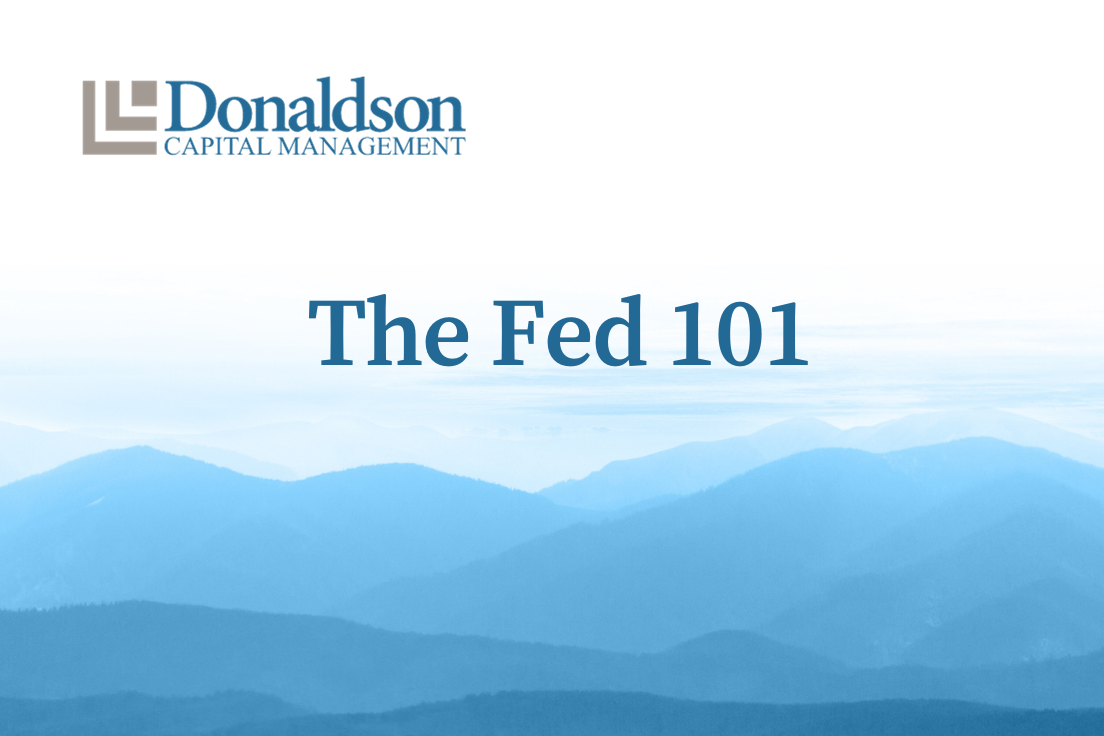The Fed 101

The Fed, or more formally, the U.S. Federal Reserve System, is becoming a household name. Within the financial media, there is significant speculation about what the Fed plans to do with interest rates – its primary tool to maintain financial stability in the United States. You probably have questions about what the Fed is, but how do its decisions affect you?
First off, we need to understand the Fed's role in the economy. The Fed is the central bank of the United States, charged by Congress with the dual mandates of achieving maximum employment and stable prices. This is accomplished primarily by influencing borrowing and controlling inflations through what is known as the Federal Funds rate. The Federal Runds rate is the interest rate that banks lend to each other overnight and is the foundation of interest rates across the country. If the Fed raises this rate, in theory, it is trying to slow the economy to help lower the rate of inflation.
In addition, the Fed trades bonds in the open market. When the Fed is actively buying bonds, it is trying to lower interest rates and spur economic growth. This is known as quantitative easing. On the flip side, quantitative tightening is when the Fed sells bonds (or allows them mature) to reduce its balance sheet and decrease the money supply in the economy. This curtails demand for bonds and often leads to higher interest rates.
If interest rates rise, demand for goods and services purchased with borrowed money should decrease. The result is more balanced supply and demand, stabilization in prices, and controlled inflation. In a higher interest rate world, it is important to monitor your outstanding debt with adjustable interest rates and be cautious when making large purchases with debt. But remember, the Fed does not control the economy or your spending. We cannot predict when or how much the Fed will raise or lower interest rates, but by investing in companies with long track records of producing profits and raising dividends, you can maintain financial security regardless of the Fed's actions.
This report was prepared by Donaldson Capital Management, LLC, a federally registered investment adviser under the Investment Advisers Act of 1940. Registration as an investment adviser does not imply a certain level of skill or training. The oral and written communications of an adviser provide you with information about which you determine to hire or retain an adviser. Information in these materials are from sources Donaldson Capital Management, LLC deems reliable, however we do not attest to their accuracy.
An index is a portfolio of specific securities, the performance of which is often used as a benchmark in judging the relative performance to certain asset classes. Indexes are unmanaged portfolios and investors cannot invest directly in an index. An index does not charge management fees or brokerage expenses, and no such fees or expenses were deducted from the performance shown. Past performance is not a guarantee of future results. The mention of specific securities and sectors illustrates the application of our investment approach only and is not to be considered a recommendation by Donaldson Capital Management, LLC.
S&P 500: Standard & Poor’s (S&P) 500 Index. The S&P 500 Index is an unmanaged, capitalization-weighted index designed to measure the performance of the broad U.S. economy through changes in the aggregate market value of 500 stocks representing all major industries.